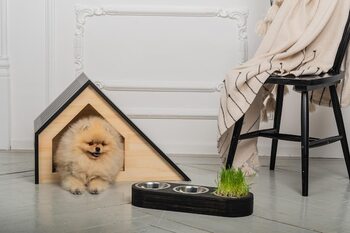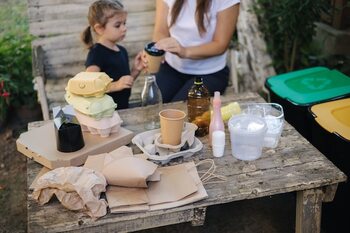Environments that stimulate curiosity in the family home

Environments that stimulate curiosity in the family home are essential for fostering holistic development in our children. Creating spaces that invite exploration, learning, and discovery not only enriches daily life but also strengthens family bonds. In this article, we will explore how to design every corner of your home to inspire creativity and curiosity for the whole family, thus ensuring memorable moments and meaningful learning. Dare to transform your space and watch how the interest of your loved ones flourishes!
The importance of design in child development
The design of spaces in the home plays a crucial role in child development, as it directly influences how children interact with their environment. A well-designed environment can stimulate the innate curiosity of young ones, inviting them to explore and learn actively. For instance, by incorporating visual elements such as vibrant colors, varied textures, and intriguing objects, one can capture children's attention and motivate them to investigate their surroundings. This not only promotes their cognitive development but also helps them develop motor and social skills while they play and interact with different materials.
Additionally, a mindful design can facilitate the creation of multifunctional spaces that adapt to the diverse needs of children at different stages of their development. By establishing dedicated areas for play, art, or reading, it helps foster a culture of learning within the home. These zones should be accessible and safe so that children feel free to experiment without restrictions. In this sense, involving the children themselves in the design process is also essential; listening to their preferences and ideas allows for the creation of a more personalized and engaging environment for them. In this way, the home becomes a true laboratory of discovery where every corner is designed to inspire curiosity and creativity.
2. Multifunctional spaces: playing and learning at the same time
Multifunctional spaces are an innovative solution to maximize the potential of every corner of our home. By integrating areas that serve both play and learning, we foster an environment where children can explore their interests freely and creatively. For example, a living room that combines a reading nook with a play area allows little ones to immerse themselves in stories while also developing motor skills through play. This flexibility not only stimulates curiosity but also teaches children to value and care for their environment by understanding that each space can offer multiple opportunities.
In addition, when designing these multifunctional spaces, it is important to consider visual and tactile elements that attract the attention of the little ones. Incorporating interactive activities such as magnetic boards or craft tables allows children to experience and learn through practice. Adaptable furniture can also be included, such as low shelves where they can easily access books and educational materials. This way, we create a dynamic environment that invites continuous exploration and strengthens the family bond by sharing moments together in creative and educational activities.
3. Natural materials: connecting with the environment
The use of natural materials in the home not only provides a cozy and warm aesthetic but also creates an environment conducive to curiosity and learning. Woods, stones, organic fibers, and untreated textiles connect children with the natural world, fostering a sense of belonging and respect for their surroundings. Incorporating elements like recycled wood furniture or handcrafted ceramic decorations can inspire conversations about sustainability, the cycle of life, and the importance of caring for our planet. Additionally, these materials tend to be more durable and safe for little explorers.
By choosing natural materials, we are offering our children the opportunity to experience textures, colors, and shapes that stimulate their senses. A corner filled with organic cotton cushions or a table made of untreated wood can become an ideal space for creative activities like painting or building. These environments are not only visually appealing but also invite free play and imagination. Thus, by integrating natural elements into our home, we not only create aesthetically pleasing spaces; we also provide unique opportunities for our children to explore their creativity while connecting with the environment around them.
4. Reading corners: fostering imagination
Reading nooks are magical spaces that foster imagination and a love for books in the entire family. By creating a dedicated reading area, whether it's a cozy armchair in a corner of the living room or a tent with soft pillows in the bedroom, children are invited to immerse themselves in fascinating stories and explore new worlds without limits. Equipping this nook with accessible shelves filled with a variety of books, from classic tales to contemporary works, allows each family member to find something that sparks their interest and curiosity. The key is to make these spaces comfortable and inviting, transforming them into retreats where hours slip away between pages.
Additionally, integrating visual elements such as inspiring images or murals related to book characters can further stimulate creativity. Good lighting is also essential; consider adding soft lamps or warm lights that invite reading during quiet nights. As children develop reading habits from a young age, they will not only develop essential language skills but also learn to think critically and imagine beyond the visible. Thus, reading nooks are not only a place to enjoy a good book but also a meeting point where meaningful conversations are cultivated and family bonds are strengthened.
5. Art at home: tools to express creativity
Art at home is a powerful tool for expressing creativity and stimulating the curiosity of all family members. By integrating spaces dedicated to artistic creation, such as a painting corner or a craft area, children are encouraged to explore their emotions and thoughts through different mediums. Providing a variety of materials, from watercolors to clay, creates a conducive environment for experimenting without fear of making mistakes. Each stroke and each figure can become open doors to new ideas and narratives, thus fostering a rich and diverse cognitive and emotional development.
In addition to being a physical space, art at home can extend to family activities that strengthen the bond between household members. Organizing art nights where everyone showcases their work or undertaking joint projects not only allows for sharing talent but also cultivates social skills such as communication and teamwork. Creating a family gallery with the completed works can be a fun way to celebrate both collective and individual effort, turning each piece into a tangible reminder of mutual support and emotional connection. Thus, art becomes a catalyst for building unforgettable memories that enrich family life.
6. Indoor gardens: cultivating curiosity for nature
Indoor gardens are a wonderful addition to any home, becoming a natural refuge that sparks curiosity and a love for nature in young children. By incorporating plants of various species, from easy-to-care-for succulents to aromatic herbs that can be used in cooking, an attractive environment is created that invites exploration. Children can learn about the life cycle of plants, the process of photosynthesis, and the importance of water and sunlight, all while experiencing the soil between their hands. Additionally, cultivating an indoor garden is an activity that can be done as a family, fostering moments of bonding and collaboration.
The design of an indoor garden should not only focus on plants; space can also be utilized to include elements like decorative pots, automatic irrigation systems, or even small water features that add sound and movement to the environment. These features transform a simple corner of the home into a vibrant ecosystem where every family member can participate actively. Additionally, observing how plants grow and thrive fosters a sense of responsibility and achievement in children, motivating them to care for the natural environment. Thus, indoor gardens not only beautify the home but also become an endless source of learning and continuous discovery for the whole family.
7. Educational technology: integrating digital learning at home
Educational technology is revolutionizing the way we interact with learning at home, turning every corner of the home into a space for discovery. From educational apps to online learning platforms, these digital tools not only facilitate access to a vast amount of information but also allow for the personalization of the educational experience according to each child's interests and abilities. Integrating devices like tablets or laptops in specific areas of the home can motivate children to explore topics they are passionate about, thus facilitating a more meaningful and autonomous learning experience.
Furthermore, it is essential to promote a balanced and responsible use of technology. Dedicating specific moments to interact with these educational resources can help establish a routine that combines screen time with practical and creative activities. Creating spaces where collaborative projects can be carried out, such as scientific experiments or digital crafts, will encourage not only individual learning but also family collaboration. In this way, educational technology becomes an ally in cultivating curiosity and enhancing the holistic development of our children within the family environment.
8. Experiment Zone: fun science for the whole family
Creating a home experiment zone is an exciting way to spark scientific curiosity in young children while strengthening family bonds. This space can be a corner of the living room, a table in the kitchen, or even a dedicated area in the garden, equipped with accessible and safe materials for conducting simple experiments. Think of activities like creating baking soda and vinegar volcanoes, growing sugar crystals, or exploring chemical reactions using common ingredients. Through play and experimentation, children feel motivated to ask questions and seek answers, thereby fostering their critical thinking and investigative skills.
Moreover, this area not only benefits children; adults can also get involved and enjoy the process. Organizing family sessions where each member proposes a different experiment can be a fun and educational experience. Sharing these moments not only helps develop a scientific mindset but also opens up spaces for conversations about concepts like nature, physics, and chemistry. At the end of the day, what matters is the time spent together and the laughter generated during scientific explorations, creating lasting memories that will be etched in family history.
9. Personalization of the family space: a reflection of shared interests
The personalization of the family space is key to reflecting shared interests and strengthening the identity of each household member. By incorporating elements that speak to the passions and hobbies of the family, such as artwork, family photographs, or books that ignite collective interest, a cozy and meaningful environment is created. This type of decoration not only beautifies the space but also acts as a catalyst to initiate conversations about common interests, thus fostering collaborative learning and memorable experiences between parents and children.
By allowing each member to contribute to the creation of the family space, a sense of belonging and respect for individual differences is promoted. For example, designating a wall for temporary exhibitions where children can showcase their art or school projects can motivate them to express themselves creatively. Similarly, including areas dedicated to joint activities—such as board games, crafts, or family reading—invites everyone to participate actively and fosters natural curiosity. Ultimately, personalizing the home not only makes it a beautiful and unique place but also strengthens family bonds by celebrating their shared interests.



